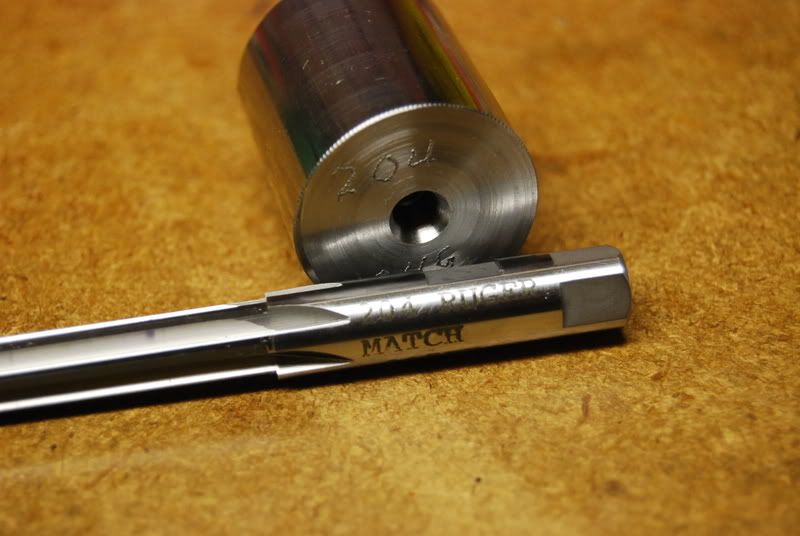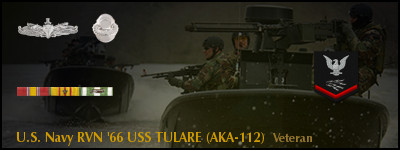pac-nor.204 match chamber
-
varget204
- Senior Member
- Posts: 121
- Joined: Thu Mar 19, 2009 11:49 am
- .204 Ruger Guns: savage M 12fv 26" krieger barrel,sav 10 criterion 26" barrel
- Location: missouri
pac-nor.204 match chamber
ordered pac-nor 1-11 polygonal twist super match barrel w/204 match chamber;was wondering what OAL is to fit shorter lead & throat. varget204
- Rick in Oregon
- Moderator
- Posts: 4942
- Joined: Thu Dec 01, 2005 4:20 pm
- .204 Ruger Guns: Sako 75V, Cooper MTV, Kimber 84M, Cust M700 11 Twist
- Location: High Desert of Central Oregon
- Contact:
Re: pac-nor.204 match chamber
That will depend on which "Match Chamber" P/N uses on your barrel. Unless you specified the lead/freebore and neck diameter, it could be one of about four 'Match Chambers' that P/N catalogs. Ask them to send you the Print No. to be sure of what you're getting before getting started.
One thing for sure though, you picked one of the best barrel makers available. Got a few of 'em myself.
One thing for sure though, you picked one of the best barrel makers available. Got a few of 'em myself.
- SShooterZ
- Junior Member
- Posts: 64
- Joined: Wed Nov 25, 2009 11:23 pm
- .204 Ruger Guns: CZ 527 Varmint - Savage 12 w/ Custom PacNor 1:11
Re: pac-nor.204 match chamber
I have a "Match Chamber" in my Pac-Nor Savage prefit. I can seat the 32gr bullets easily in the lands and still have plenty of bullet in the throat. I don't know which of the different versions that Rick referenced I have, but it is a much easier chamber to reload for vs. a standard long throated chamber.
- Rick in Oregon
- Moderator
- Posts: 4942
- Joined: Thu Dec 01, 2005 4:20 pm
- .204 Ruger Guns: Sako 75V, Cooper MTV, Kimber 84M, Cust M700 11 Twist
- Location: High Desert of Central Oregon
- Contact:
Re: pac-nor.204 match chamber
SShooterZ: Pac-Nor's Match reamers differ primarily in both leade (freebore) and neck diameter. Todd's original Match chamber had .062" freebore....mine has .015". Todd's drawing (from his book) shows a neck diameter of .230", and most of PN's Match reamers are either that or .232", which is SAAMI spec. Mine is the "no turn" neck, and has Todd's neck I.D. of .230", thereby eliminating shooting any factory ammo (as it usually mic's right at .232" at the neck with a bullet in the case).
To date, I've encountered a total of four Pac-Nor Match reamers that all differ in one way or another in regard to the above, hence my answer to the OP.
And with that in mind, the OP should ask PN to send him the drawing used for his reamer to be completely sure of exactly what he's got prior to loading. The use of the Hornady OAL tool (formerly Stoney Point) should also be used to get the exact distance to kiss the lands with whatever bullet(s) he's using.

The caveat here is that 204R loading data in the manuals can only be used as a very basic starting point using the lightest loads to start with, as with these Match chambers pressure is sure to be higher because of the elimination of the huge amount of factory freebore used, usually right around .100"+ in most 204R's I've checked, including my factory 204 rifles. The benefit is of course is that extreme accuracy is possible, albeit with slightly reduced velocity.....and the varmints I've tagged with mine don't seem to notice the loss of about 100 fps or so, but the ratio of hits "way out there" was noticed immediately in the field. Loading for a Match chamber 204R is then like any other high intensity varmint cartridge.
Loading for a Match chamber 204R is then like any other high intensity varmint cartridge.
(I'm sure you're aware of all this......the above is mainly for the OP )
)
To date, I've encountered a total of four Pac-Nor Match reamers that all differ in one way or another in regard to the above, hence my answer to the OP.
And with that in mind, the OP should ask PN to send him the drawing used for his reamer to be completely sure of exactly what he's got prior to loading. The use of the Hornady OAL tool (formerly Stoney Point) should also be used to get the exact distance to kiss the lands with whatever bullet(s) he's using.

The caveat here is that 204R loading data in the manuals can only be used as a very basic starting point using the lightest loads to start with, as with these Match chambers pressure is sure to be higher because of the elimination of the huge amount of factory freebore used, usually right around .100"+ in most 204R's I've checked, including my factory 204 rifles. The benefit is of course is that extreme accuracy is possible, albeit with slightly reduced velocity.....and the varmints I've tagged with mine don't seem to notice the loss of about 100 fps or so, but the ratio of hits "way out there" was noticed immediately in the field.
(I'm sure you're aware of all this......the above is mainly for the OP
Re: pac-nor.204 match chamber
Where do you guys measure the neck diameter on the loaded case? Do you do it where the shoulder meets the neck? Seems like that would be the widest point.
- Rick in Oregon
- Moderator
- Posts: 4942
- Joined: Thu Dec 01, 2005 4:20 pm
- .204 Ruger Guns: Sako 75V, Cooper MTV, Kimber 84M, Cust M700 11 Twist
- Location: High Desert of Central Oregon
- Contact:
Re: pac-nor.204 match chamber
You measure in the center of the neck area between the shoulder and the end of the case with a bullet seated. You are trying to determine how "thick" the loaded round is at the neck to ensure it will fit into the chamber with at least .002" of clearance" "per side" of the case neck to the chamber walls.Sigfla wrote:Where do you guys measure the neck diameter on the loaded case? Do you do it where the shoulder meets the neck? Seems like that would be the widest point.
If your loaded round mic's .028" like mine do, then it's a perfect fit into a chamber cut with a reamer with a neck I.D. of .232". This is why neck thickness is an important issue, also neck thickness concentricity. My rifle cut with the Match chamber cut with the neck I.D. of only .230" requires careful monitoring of my cases to make sure no necks "grow" in thickness over time in order to keep the loaded O.D. at the neck to .028". That's only a neck clearance of .001" 'per side" in the Match chamber. This is when neck turning may come into play if needed.
Bottom line: You need to know your rifles chamber neck diameter, period. Once known, either from a chamber cast or the appropriate reamer drawing, go from there.
Confused yet?
Re: pac-nor.204 match chamber
lol always confused. I have a Starrett digital mic and using factory Hornady rounds I am getting .229-.230. My mic spindle and anvil are flat however so I wonder if I should buy the ball attachment. Right now I can't really home in on the center of the neck. The spindle and anvil just kinda decides where it wants to settle. Are you guys using a ball spindle in your mics?Rick in Oregon wrote:You measure in the center of the neck area between the shoulder and the end of the case with a bullet seated. You are trying to determine how "thick" the loaded round is at the neck to ensure it will fit into the chamber with at least .002" of clearance" "per side" of the case neck to the chamber walls.Sigfla wrote:Where do you guys measure the neck diameter on the loaded case? Do you do it where the shoulder meets the neck? Seems like that would be the widest point.
If your loaded round mic's .028" like mine do, then it's a perfect fit into a chamber cut with a reamer with a neck I.D. of .232". This is why neck thickness is an important issue, also neck thickness concentricity. My rifle cut with the Match chamber cut with the neck I.D. of only .230" requires careful monitoring of my cases to make sure no necks "grow" in thickness over time in order to keep the loaded O.D. at the neck to .028". That's only a neck clearance of .001" 'per side" in the Match chamber. This is when neck turning may come into play if needed.
Bottom line: You need to know your rifles chamber neck diameter, period. Once known, either from a chamber cast or the appropriate reamer drawing, go from there.
Confused yet?
- Rick in Oregon
- Moderator
- Posts: 4942
- Joined: Thu Dec 01, 2005 4:20 pm
- .204 Ruger Guns: Sako 75V, Cooper MTV, Kimber 84M, Cust M700 11 Twist
- Location: High Desert of Central Oregon
- Contact:
Re: pac-nor.204 match chamber
Sigfla: Get yourself a good quality caliper, either digital or dial. The blade of these tools is perfect for measuring the loaded neck diameter. A mic is very useful in the shop and loading bench, but not ideally suited for some jobs, and measuring neck O.D. is one of them.
You mention a ball end on your mic. Most of us use a tubing mic for measuring the case neck thickness (actual neck wall), as these tools are designed for just such use. With a digital or dial caliper, a tubing mic and your flat blade mic, you'll be set for any measuring task that occurs in handloading.
Another thing a caliper will have you may not be aware of, is they all have depth gauges built in. You can measure depth of primer pocket and other depth related tasks.
You mention a ball end on your mic. Most of us use a tubing mic for measuring the case neck thickness (actual neck wall), as these tools are designed for just such use. With a digital or dial caliper, a tubing mic and your flat blade mic, you'll be set for any measuring task that occurs in handloading.
Another thing a caliper will have you may not be aware of, is they all have depth gauges built in. You can measure depth of primer pocket and other depth related tasks.
- SShooterZ
- Junior Member
- Posts: 64
- Joined: Wed Nov 25, 2009 11:23 pm
- .204 Ruger Guns: CZ 527 Varmint - Savage 12 w/ Custom PacNor 1:11
Re: pac-nor.204 match chamber
Actually, as usual, I learned something new here. I know the freebore was different, that was pretty obvious. I didn't know they were using different neck diameter reamers though.Rick in Oregon wrote:(I'm sure you're aware of all this......the above is mainly for the OP)
As always, great information and insight. Thanks again Rick.
Re: pac-nor.204 match chamber
I just got the ball attachments for my mic. They are also from Starret and clip onto the flat measuring points of the mic. It really seems to allow for a precise measurement on the neck of the case. My caliper is a nice one from Home Depot but not the quality I needed for hand loading. Hence the ball order. They were cheap from Amazon and I can zero my mic on them and set a precise neck diameter then see if the case fits. Using this system I found cases that measured .229-.230 with my digital caliper, .228 with the flat ends of my digital mic, were actually .2277 right at the center of the neck using the ball ends. It's a cheap solution to add precision to the mic. All bets are off of course if you have a super duper $$ caliper.
